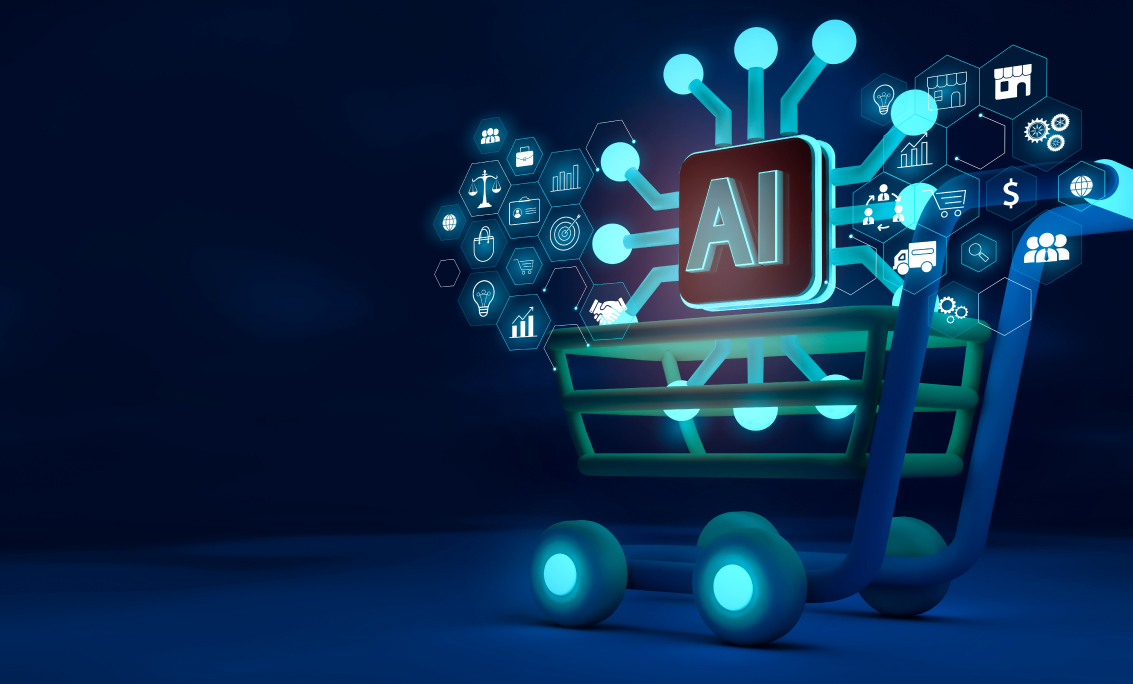
Retail and e-commerce are operating in a new reality: customers expect same-day or next-day delivery, while margins continue to shrink under inflation, labor costs, and supply chain disruptions. For technology leaders, the challenge is to deliver more value with fewer resources without compromising on speed or service quality.
This is where Agentic AI comes in.
Unlike traditional AI, which requires constant human prompting or oversight, Agentic AI systems can autonomously perceive, decide, and act within retail environments. In addition to being intelligent analytical tools, they’re decision-making, execution-capable agents that can self-correct and adapt in real time. Understanding the benefits of AI in retail and specifically the advantages of adopting Agentic AI in retail is now a strategic imperative for engineering leaders in retail businesses. Let’s explore how these systems are already helping retailers lower costs and accelerate delivery.

One of the biggest sources of cost leakage in retail is poor inventory management. Overstocking ties up capital and increases warehousing costs, while stockouts frustrate customers and erode loyalty.
Agentic AI solves this by continuously analyzing POS data, customer buying patterns, and external signals (such as weather or local events) to predict demand at a granular level. These systems can autonomously trigger replenishment orders, reallocate inventory across locations, or even suggest promotions to clear slow-moving items.
For instance, Walmart is reimagining its operations with agentic AI agents that can act on real-time inventory data without human oversight. These systems are already reducing waste and increasing on-shelf availability across thousands of SKUs, forming a key part of Walmart’s “Retail Rewired” strategy.
Key takeaway for tech leaders: Inventory forecasting powered by autonomous AI agents can deliver measurable cost reductions while enhancing customer trust through product availability.
At the warehouse level, labor is often the single largest expense. Manual picking and packing slow down processing and leave plenty of room for errors. Agentic AI systems change the game by orchestrating fleets of autonomous robots that work around the clock – picking, packing, and sorting with speed and precision no human team can match.
Ocado offers a glimpse of what this future looks like. Its On-Grid Robotic Pick systems use AI-driven robotic arms to pick thousands of items per hour with more than 99% accuracy. Higher throughput without expanding warehouse space acts as a direct win for cost and efficiency.
In practice, this means fulfillment centers can absorb peak season spikes without adding proportional headcount – faster cycles, fewer errors, and a cost structure that scales intelligently.
Supply chains don’t break in one place; they ripple across traffic jams, late suppliers, port congestion, and weather disruptions. Traditional planning tools struggle here because they’re static by design. Agentic AI, however, thrives on flux.
Imagine a delivery truck stuck in traffic: a human dispatcher might spend hours juggling alternatives. An AI agent can reroute shipments in minutes, coordinate backup carriers, and notify customers – all autonomously. That’s not efficiency, that’s resilience. McKinsey estimates AI can reduce logistics costs by 5–20% and shrink inventory levels by up to 30% (2025). The broader market is surging too – AI in logistics is already worth $20.8B in 2025, growing at 45% annually!
Engineering leaders need to think of Agentic AI as the conductor of a chaotic orchestra that aligns moving parts into a smooth, adaptive system.
Customer service is often riddled with high headcounts, long training cycles, and ballooning costs. AI-powered agents have already eased the burden, but Agentic AI takes it further. These systems don’t just answer – they act. They can issue refunds, trigger returns, or even tailor discounts on the spot.
Sephora shows what this looks like at scale. Its conversational AI agents handle thousands of daily interactions, cutting response times by 40%. More interestingly, they drove an 11% jump in in-store makeover bookings by guiding customers through product quizzes, per this case study.
The benefits of AI in retail here are clear: lower service costs, quicker resolutions, and customer experiences that actually drive sales.
It’s easy to focus on customer-facing operations, but retail organizations bleed money in the back office too. Repetitive processes like invoices, vendor payments, and compliance checks swallow up time and budget.
Here’s where agentic AI shines quietly. Systems can now process invoices end-to-end, flag anomalies, and reconcile payments with minimal human touch. Some even negotiate with suppliers within defined parameters.
The results? Back-office costs are shrinking by 30–50%, error rates are dropping 90%, and efficiency gains are topping 40%. Not flashy, but transformative for operating margins.

The benefits of AI and agentic AI in retail are no longer theoretical but measurable and immediate. From smarter inventory management to faster fulfillment, dynamic supply chains, and automated customer service, Agentic AI in retail is reshaping how technology leaders deliver value.
For retail engineering leaders, the question is no longer if but how quickly to adopt these autonomous systems. Retailers who embrace Agentic AI will lower costs, increase delivery speed, and create a competitive advantage that is difficult to replicate.
The path forward doesn’t require a complete overhaul overnight. Start with a pilot—whether in demand forecasting, fulfillment automation, or customer service—and scale from there. The retailers who act now will not only meet today’s expectations but will also define tomorrow’s standards for speed, efficiency, and customer experience.
Ready to see how Agentic AI can transform your retail operations? Contact us today to learn how we can lower costs and speed delivery in your business.
MADE BY ELLIPSIS MARKETING